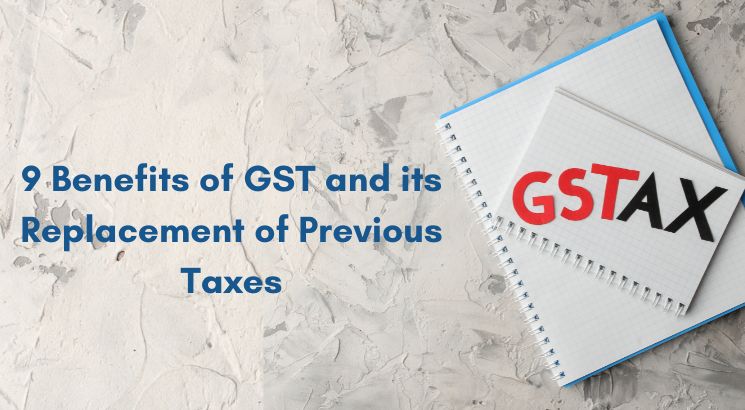
Mar 18, 2024 By Loanmani 86 Views Category: Financial Insights
The Goods and Services Tax (GST) has been a game-changer in India's tax landscape since its implementation in 2017. This comprehensive tax reform replaced a complex web of indirect taxes with a unified tax system. Let's delve into the 9 benefits of GST and understand how it has transformed the taxation structure of the country.
1. Simplified Tax Structure:
GST replaced multiple indirect taxes like VAT, service tax, excise duty, etc., with a single, streamlined tax structure. This simplification has made compliance easier for businesses, reducing the burden of multiple filings and calculations.
2. Ease of Doing Business:
With the removal of various state-level taxes, GST has made interstate trade more efficient. Businesses no longer face different tax rates and procedures across states, promoting ease of doing business and fostering a unified national market.
3. Elimination of Cascading Effect:
Under the previous tax regime, taxes were levied on taxes, leading to a cascading effect. GST eliminates this by allowing businesses to claim input tax credit on the taxes paid on their purchases, thereby reducing the tax burden.
4. Increased Tax Base:
GST has widened the tax base by bringing more businesses into the formal economy. With its threshold for registration, even small businesses are now part of the tax net, contributing to revenue generation for the government.
5. Boost to Manufacturing Sector:
The 'Make in India' initiative received a boost with GST, as it simplified the tax structure for manufacturers. Seamless input credit and uniform tax rates across states have encouraged growth in the manufacturing sector.
6. Transparency and Accountability:
GST's online platform ensures transparency in tax transactions. Taxpayers can track their payments and filings digitally, reducing chances of tax evasion and enhancing accountability.
7. Reduced Prices for Consumers:
One of the key objectives of GST was to eliminate the cascading effect of taxes, ultimately leading to lower prices for consumers. Many essential goods and services became more affordable post-GST implementation.
8. Rationalization of Tax Rates:
GST rationalized tax rates, bringing uniformity and simplicity to the tax system. It categorized goods and services into different tax slabs, making it easier for businesses and consumers to understand.
9. Encouragement to Startups and SMEs:
Startups and Small and Medium Enterprises (SMEs) benefit from GST's simplified compliance and reduced tax burden. The threshold for GST registration allows these entities to focus on business growth rather than navigating complex tax procedures.
FAQs about GST:
Q: What is GST?
A: GST stands for Goods and Services Tax, which is an indirect tax levied on the supply of goods and services in India.
Q: How many types of GST are there?
A: There are three types of GST in India: CGST (Central Goods and Services Tax), SGST (State Goods and Services Tax), and IGST (Integrated Goods and Services Tax).
Q: How does GST benefit businesses?
A: GST benefits businesses by simplifying tax procedures, promoting interstate trade, allowing input tax credit, and reducing the tax burden.
Q: Has GST reduced the prices of all goods and services?
A: While GST aims to reduce the overall tax burden, not all goods and services have become cheaper. Some items are taxed at higher rates under GST.
Conclusion:
The Goods and Services Tax (GST) has undoubtedly brought about significant changes to India's taxation system. From simplifying tax procedures to promoting a unified market, the benefits of GST are multifaceted. Businesses now operate in a more transparent and accountable environment, while consumers enjoy reduced prices on many products and services.
As India continues its journey towards economic growth and development, GST remains a cornerstone reform that enhances efficiency, compliance, and revenue generation. Embracing GST has not only modernized India's tax structure but has also positioned the country as a more attractive destination for investment and business expansion.